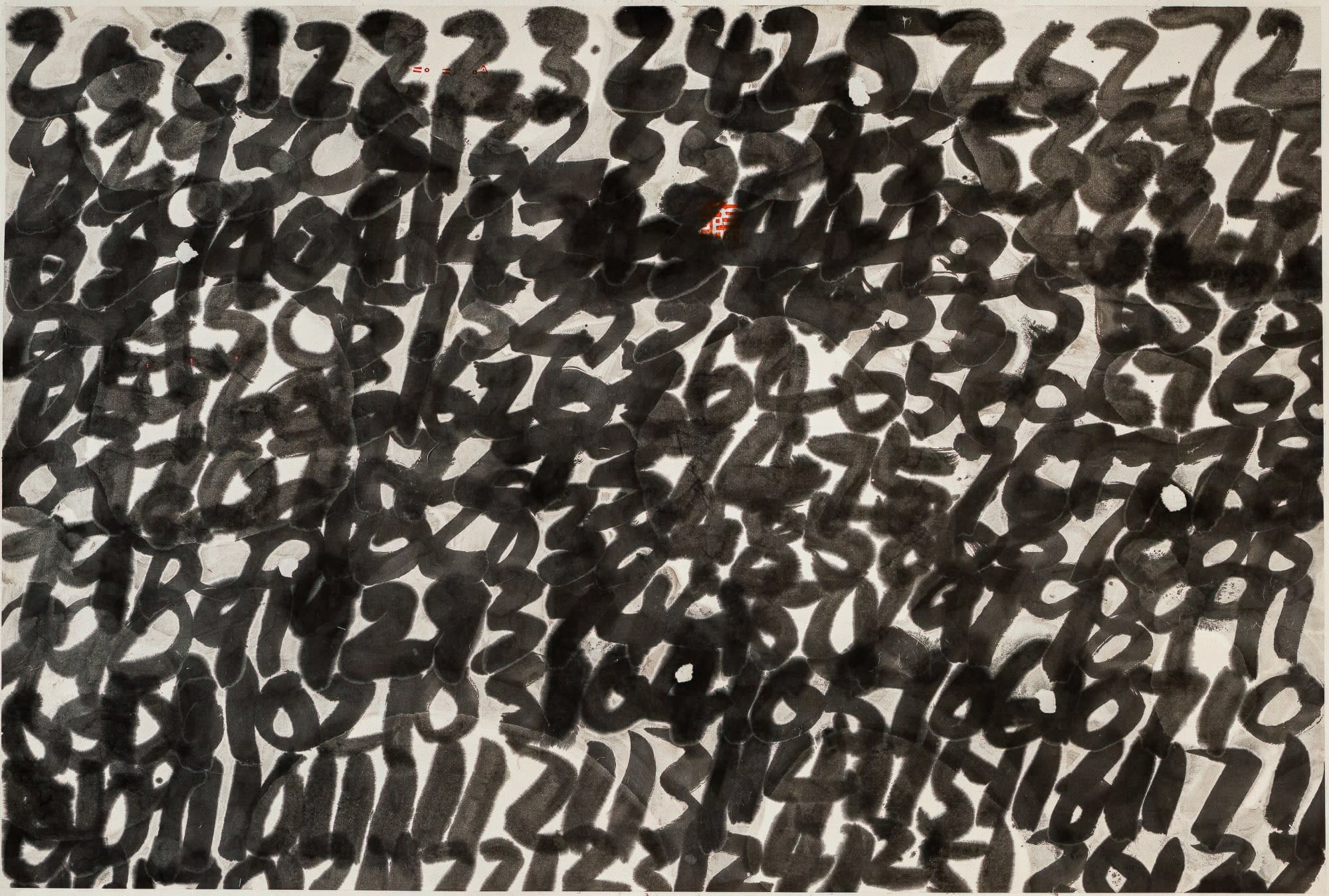
We're delighted to announce the publication of Dr. Daniel Greenberg's research on Fung Ming Chip in Art Journal(CAA), Volume 83, Issue 3 (2024). Art Journal is a prestigious peer-reviewed academic publication of the College Art Association (CAA), established in New York City in 1941, renowned for its critical engagement with 20th and 21st-century art within global frameworks. In contemporary art discourse, the Art Journal (CAA) plays a pivotal role worldwide. They serve as vital conduits for disseminating cutting-edge scholarship and critical analysis across various fields of art history, theory, and practice, fostering rich dialogue within academic and artistic communities.

Fung Ming Chip was writing the Exhibition Title ©The FQM
In response to Fung’s latest solo exhibition “Traces of Times,” at Fu Qiumeng Fine Art, this essay delves into how the artist conceptualizes the role of time within his shufa (calligraphy) practice and how his time-based artistic practice is in relation to a broader cultural, historical, and theoretical context in both traditional and contemporary China.

The digital version of the article is available for download at the following link:
https://www.tandfonline.com/toc/rcaj20/current
In his article, Dr. Greenberg argues how Fung Ming Chip’s shufa works represent and embody time, offering insightful analyses of traditional Chinese theories alongside meticulous examinations of the artist’s shufa works. The first section of the article discusses Fung’s efforts to use writing style as a tool to deconstruct the process of writing while retaining shufa’s power to render sequenced time in two dimensions. Using experiments and innovations built from the medium of ink and paper, the artist prioritizes the understanding of the medium over adherence to formal elements, such as xiantiao (ink line).
Drawing upon early Chinese aesthetic and ontological theories to elucidate the enduring significance of shufa within traditional Chinese art, such as Diagram of the Battle Formation of the Brush by Madame Wei and Doctrine of Mind and Essence by Mencius, which both emphasize the essence of unifying one’s heart and mind in calligraphy, Dr. Greenberg argues how Fung’s shufa is a contemporary response to traditional Chinese thought. In light of this, by examining Fung Ming Chip’s conceptual shufa works, such as Fog Script and Pile Needle Script: Altered Consciousness, Dr. Greenberg argues that Fung’s latest deconstructions build upon and break from traditional shufa, leaving behind the written word to create alternative methods of encoding and decoding time.

Curator Dr. Greenberg and Artist Fung Ming Chip ©The FQM
Further expounding on Fung Ming Chip’s multifaceted exploration of time, Dr. Greenberg clarifies the artist’s distinctive approaches to writing style, symbolic content, and artistic process. Fung’s works challenge traditional notions of shufa by experimenting with various techniques and mediums to encode time in his creations. Notably, Fung extends his exploration of time by incorporating numerical sequences and layered artistic processes. As exemplified in his NumberS Series, Fung used successive layers of Arabic numbers, ink washes, and calculated excisions to transcribe his full process of creation. In his work “NumberS: Secret Script,” which was both discussed in Dr. Greenberg’s article and shown in his exhibition “Traces of Time,” at Fu Qiumeng Fine Art, his unique approach to shufa of writing sequences of dates and binary code using both traditional brushwork and mechanical processes is well presented. His NumberS Series pushed the boundaries of shufa while simultaneously making his artistic processes legible on the page, thereby inviting viewers to immerse themselves in the temporal essence of his art.

Fung Ming Chip, NumberS: Secret Script (数字系列: 秘字), ink on xuan paper, 23 ¼ x 35 in (59 x 89 cm), 2021 ©THE FQM
About the author:
Daniel M. Greenberg is an assistant professor in the Department of Art History at the University of Minnesota, Twin Cities. His book, Mapping Without Maps, examines how paintings, state rituals, architecture, and natural history function as a political, cultural, and environmental power to define the Qing dynasty. Holding a B.S. from Rutgers University (1999), an MA in History of Calligraphy at the Graduate Institute of Art History, National Taiwan University, and a Ph.D from Yale University (2015), Dr. Greenberg’s research examines art and empire in early modern China. In 2023, he co-curated C. C. Wang: Lines of Abstraction at Hunter College and Fung Ming Chip: Traces of Time at Fu Qiumeng Fine Art.


